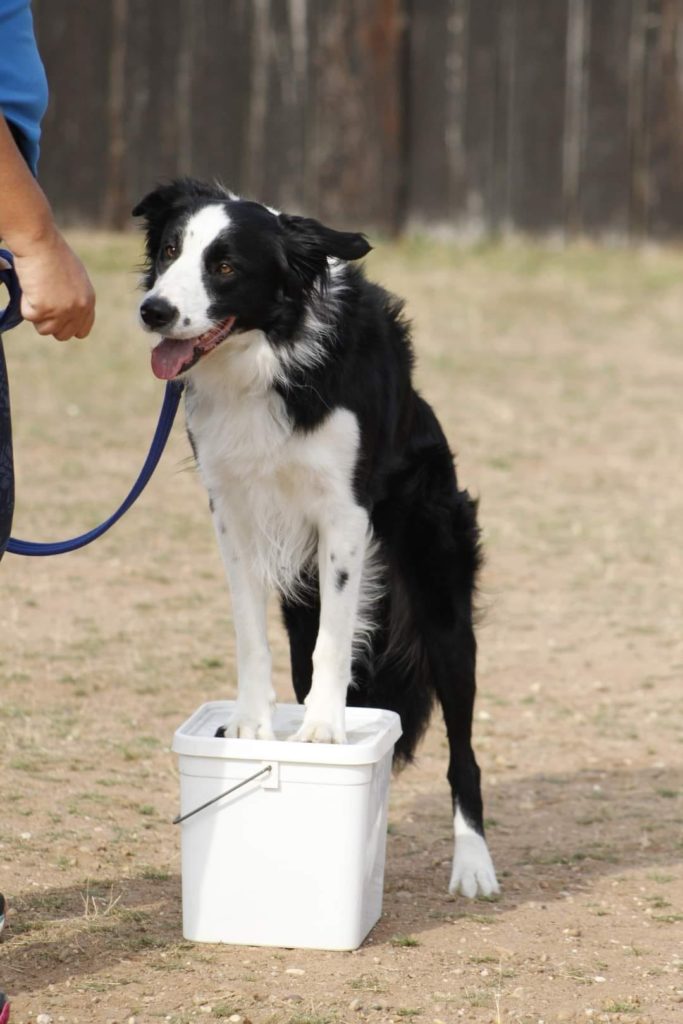Do you want to take your dog to agility training classes but find them too expensive for your budget? Or perhaps there aren’t any agility classes near by, or don’t fit your schedule?
Why not bring your agility training home with some DIY equipment?
Don’t worry – all you need is a little creativity and patience. Here’s how!
Types of agility challenges
There are certain standard agility exercises which dogs are trained to do, some using what may appear to be “specialised” equipment, but there is no reason why agility training your dog needs to cost a fortune.
Ordinary household objects can be adapted into perfectly adequate agility training equipment – with ease! And what’s even better is all of these DIY agility training tips are easy to set up and put away, so all you need is a small yard or local park!
Let’s get you up and running with some of the basic agility challenges:
Jumps
It’s all about teaching your dog to jump – what he is jumping over is irrelevant.
Depending on the size of your dog, if you need a small jump, take two tins of fruit from the cupboard, put them upright on the floor a few feet apart and place a broomstick or doweling rod on top.
For a larger dog, you can use buckets or even chairs or stools.
The important thing to remember is the cross bar must be easily moved if the dog doesn’t clear the jump. This is to prevent your dog getting hurt hurt.
Clearing a tyre
Clearing a tyre is all about getting your dog confident enough to jump through something.
Specially manufactured tyres are used in agility competitions, but there are simple ways you can create the same setup at home:
- Hula Hoops are a great option which are cheap and easy to buy.
- Alternatively you can fashion a hoop from soft wire with toweling wrapped around it to prevent injury
Tunnels
Tunnels are easy (and fun) to create. There are two good DIY options which will barely cost you anything:
- Most toy stores sell activity tunnels for children. These work well for DIY dog agility tunnels as well.
- Another option, which may not cost anything at all, is using several chairs and a bed sheet for a make-shift tunnel.
Walking, Balancing and Body Awareness
These types of agility exercises require varied, rather than expensive agility equipment.
For balancing, replace the dowel or broom handle used in the Jump training with a plank of wood. Again this can be a few inches off the ground using tins of fruit, or higher off the ground using buckets or even tins of paint.

It’s a little trickier, but it’s possible to create a see-saw with a plank of wood over a tin (or similar object) in the middle. Bricks are another good sturdy option for a see-saw.
Teaching your dog to walk around irregularly placed objects will help develop his body awareness. For this you can use tins placed on the floor at varying intervals and teach him to “zigzag” in and out of them.
Once your dog has mastered the “zigzag” you can teach him to do the same thing going backwards – like a pro!
A further variation to this is teaching your dog to walk in and out of your legs as you walk.
All of the above, except the small outlay of the DIY see-saw, are pretty much cost free!
Next steps with agility training
Whether you want to put your dog into agility competition or just want to give him a more mentally stimulating exercise regime, there is no need to spend a fortune on equipment or classes until you are ready to do so.
Most of the above DIY challenges are almost as good if not as good as those expensive agility classes, and will definitely give you and your dog an easy introduction to agility.
There is no reason why you can’t adapt and vary the challenges above – let your own imagination go wild to spice up your dog’s agility life!



Leave a Reply